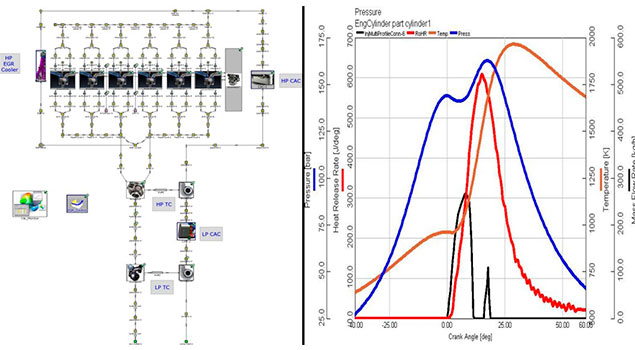1D Engine simulation as a helpful tool within the scope of engine development for alternative fuels use
Two of the five pillars of the European Union’s energy strategy are the decarbonizing of transportation to cut greenhouse gas emissions by means of low-carbon mobility and the promotion of research and innovation in low-carbon and clean technologies.
In line with the above, Applus+ IDIADA has for a number of years been participating in alternative fuel solutions for road transportation as main coordinator or partner of several innovation projects such as Dinagas (Eureka, 2007), LNG Blue Corridors (FP7, 2013), HDGAS (H2020, 2015). In these projects the engine development for alternative fuel use was either a work package itself or the core of the project.
One of the key ativities in this engine development process is 1D engine simulation, which for several decades has been an established method in the development of internal combustion engines, starting from relatively simple methods like filling and emptying calculations to more sophisticated methods to provide more powerful calculations and results.
Generally speaking, the engine model is constructed using a 1D tool which takes account of the wave dynamic engine manifold phenomena via the robust solution of the Navier-Stokes equations. The model comprises several sub models such as combustion, heat transfer, and friction losses and it must be validated with more than 100 measurements from Applus+ IDIADA engine test benches. Figure 1 shows an example of a 1D engine model with some in-cylinder results.
Once the model had been validated working with traditional fuels (Diesel or Gasoline) the model is ready to perform simulations and estimations with the engine working with the alternative fuel studied, such as natural gas, LPG etc. These estimations will help the engineering team’s decision during the development loops. Finally, it is important to mention that the 1D engine simulation can be done alone or can be an input provider to other software such as CFD, FEM etc. to perform more complex calculations.
Figure 1: 1D engine model (left), In-cylinder results (right)
